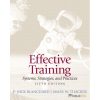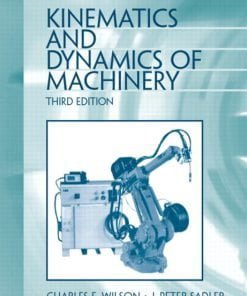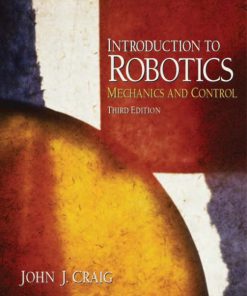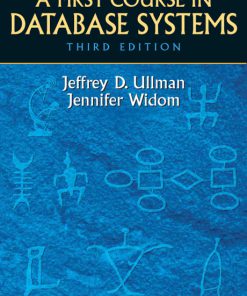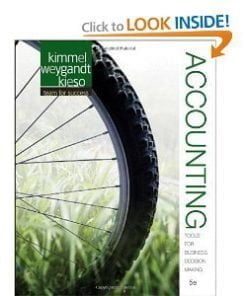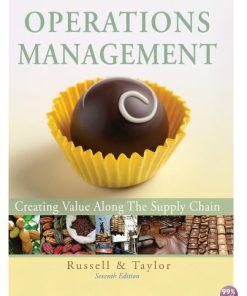Solution Manual for Masonry Skills, 7th Edition
$35.00 Original price was: $35.00.$26.50Current price is: $26.50.
Solution Manual for Masonry Skills, 7th Edition
Solution Manual for Masonry Skills, 7th Edition
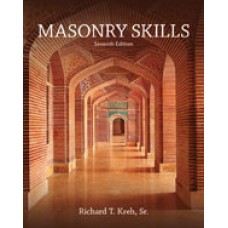
Product details:
- ISBN-10 : 1285426835
- ISBN-13 : 978-1285426839
- Author: Richard T. Kreh, Sr.
MASONRY SKILLS, Seventh Edition, provides a comprehensive, reader-friendly guide to the masonry trade, covering fundamental principles, basic practices, advanced techniques, and new trends and developments in both residential and commercial masonry. Meticulously revised, the new edition includes the latest developments in the field, including current OSHA requirements, advances in construction technology and techniques, and a focus on sustainable building materials and processes. Featuring two full-color sections of finished projects, a new engaging design, and a wealth of new photos, the seventh edition seeks to inspire and educate both new and practicing masons. Approved and field-tested by professionals, this text is an ideal resource for anyone seeking the specialized knowledge and skills needed to succeed in the masonry industry.
Table contents:
- Section 1: Safety Practices, Tools, Equipment, and Basic Tool Skills
- Unit 1: Safety on the Job
- Objectives
- The Importance of Proper Dress
- Arranging Materials Safely in the Work Area
- Safety Nets and Personal Fall Protection
- Using Tools Safely
- Scaffolding Safety
- Ergonomics
- Equipment Safety
- When an Injury Occurs
- Hazardous Materials
- Summary
- Achievement Review
- Unit 2: Basic Tools of the Trade
- Objectives
- Trowels
- Hammers
- The Plumb Rule and Level
- Masonry Folding Scale Rules
- The Brick Set or Blocking Chisel
- Standard Mason’s Chisel
- Plugging or Joint Chisel
- Lines
- Fastening the Line
- Jointers
- Mason’s Brush
- Steel Square
- Chalk Box
- Tool Bag
- Grout Bag
- Achievement Review
- Unit 3: Learning to Use the Basic Tools
- Objectives
- Safety Notes
- Spreading Mortar with the Mason’s Trowel
- Laying the Brick
- Leveling and Plumbing the Course
- Checking the Height with the Modular Rule
- Striking the Work
- Brushing the Wall
- Cutting Brick
- Progress Check
- Achievement Review
- Unit 4: Related Equipment
- Objectives
- Manual Tools
- Power-Driven Equipment
- Achievement Review
- Section 2: Development and Manufacture of Brick and Concrete Block Masonry Units
- Unit 5: Development of Clay and Shale Brick
- Objectives
- The Development of Brick
- The Modern Brick
- Brick Sizes and Shapes
- Selecting Brick for a Job and Building a Sample Panel
- Achievement Review
- Unit 6: Manufacture of Brick
- Objectives
- Introduction
- Steps in the Manufacturing Process
- Achievement Review
- Unit 7: Development of Concrete Block
- Objectives
- Early Development of Concrete Block
- Block-Making Machines
- Lightweight Aggregates
- Characteristics and Properties of Concrete Block
- Block Sizes
- Block Shapes
- Achievement Review
- Unit 8: Manufacture of Concrete Block Masonry Units
- Objectives
- Introduction
- Block Production
- Achievement Review
- Section 3: Laying Brick to a Line and Building a Brick Corner
- Unit 9: Mixing Mortar
- Objectives
- Assembling and Storing Mixing Materials
- Standard Proportions for Mortar Mixtures
- Mixing Mortar Manually
- Mixing Mortar with the Power Mixer
- Helpful Tips to Follow When Mixing in a Power Mixer
- Problems Encountered in Mixing Mortar
- Mortar for Training Purposes
- Spec Mix
- Achievement Review
- Unit 10: Laying Brick to the Line
- Objectives
- Laying Brick
- Points to Remember
- Achievement Review
- Unit 11: Building the Brick Corner
- Objectives
- The Rack-Back Lead
- Building an outside Brick Corner in the Stretcher Bond
- Parging the Corner
- Toothing the Corner
- Inside Corner
- Progress Check
- Achievement Review
- Section 4: Mortar and Essentials of Bonding
- Unit 12: The Development of Mortar
- Objectives
- History of Mortar
- Ingredients of Mortar
- Key Factors That Control the Performance of Mortars
- Achievement Review
- Unit 13: Types of Mortar and Their Characteristics
- Objectives
- Introduction
- Classifications of Mortars
- Proportions and Property Specifications for Mortars
- Portland Cement-Hydrated Lime Mortars
- Recommended Uses of Mortar
- Portland-Lime Mortar
- Admixtures in Mortar
- Efflorescence
- Water Content of Mortar
- Repointing Mortar Joints in Historical Buildings
- Achievement Review
- Unit 14: Introduction to Bonding
- Objectives
- Bond
- Mortar Bond
- The Structural Bond
- The Pattern Bond
- Achievement Review
- Unit 15: Traditional Structural and Pattern Bonds
- Objectives
- The Running or All Stretcher Bond
- The Common Bond
- The Flemish Bond
- English Bond
- The Stack Bond
- Garden Wall Bond
- Dry Bonding the Masonry Unit
- Achievement Review
- Section 5: Laying Concrete Block
- Unit 16: Laying Concrete Block to the Line
- Objectives
- Spreading Mortar
- Laying the First Course
- Applying the Head Joint
- Positioning Block
- Adjusting Block
- Installing the Closure Block
- Reinforcing Bed Joints of Concrete Block
- Tooling Joints
- Cutting Concrete Block
- Safety Practices on the Job
- Repointing the Wall
- Care and Protection of the Work
- Achievement Review
- Unit 17: Building the Block Corner
- Objectives
- Building with Block versus Building with Brick
- Constructing a Block Corner
- Building the Corner to the Specified Height
- Installing Wire Reinforcement in Joints
- Striking or Tooling the Mortar Joints
- Progress Check
- Achievement Review
- Unit 18: Bonding Concrete Block and Rules for Bonding
- Objectives
- Running Bond
- Stack Bond
- Planning the Bond
- Bonding Brick and Concrete Blocks to Form a Wall
- Rules for Bonding
- Achievement Review
- Section 6: Estimating Brick and Concrete Block by Rule-of-Thumb Math and Cutting with the Masonry Sa
- Unit 19: Estimating Brick Masonry by Rule of Thumb
- Objectives
- The Importance of Estimating
- The Wall-Area Method
- Estimating Square Feet
- Estimating Brick
- Estimating Masonry Cement
- Estimating Sand
- Estimating Material Cost on the Job
- Estimating Labor Costs for Brick Masonry Work
- Achievement Review
- Unit 20: Estimating Concrete Block Masonry Materials
- Objectives
- Masonry Cement Mortar Needed
- Determining the Number of Units
- Estimating Materials for a Foundation by Rule of Thumb
- Totaling Materials
- Estimating Labor Costs
- Points to Remember
- Two Handy Time-Savers to Use When Estimating Concrete Block
- Achievement Review
- Unit 21: Cutting with the Masonry Saw
- Objectives
- Description of the Masonry Saw
- Advantages and Disadvantages of Cutting with Wet Blades
- Advantages and Disadvantages of Cutting with a Dry Blade
- Blade Safety Rules You Should Follow from OSHA
- General Safety Practices to Follow When Operating the Masonry Saw
- Making Cuts with the Saw
- Cutting around Electrical Boxes
- Slabs
- Rips
- Bond Beam
- Cutting Angles
- Care of the Saw
- Using the Saw to the Best Advantage
- Achievement Review
- Section 7: Masonry Practices and Details of Construcion
- Unit 22: Building a Masonry Composite Wall of Brick and Concrete Block
- Objectives
- Tying Tiers Together with Headers
- Using Metal Ties
- Achievement Review
- Unit 23: Cavity and Reinforced Masonry Walls
- Objectives
- Cavity Walls
- Reinforced Masonry Walls
- Progress Check
- Achievement Review
- Unit 24: Masonry Supports, Chases, and Bearings
- Objectives
- Lintels
- Piers
- Steel Bearing Plates
- Pilasters
- Buttress
- Chases and Recesses
- Solid Masonry-Bearing Walls
- Laying Units around Door and Window Frames
- Achievement Review
- Unit 25: Movement Joints and Intersecting Walls
- Objectives
- Movement Joints in Masonry Buildings
- Bond Breaks
- Intersecting Walls
- Achievement Review
- Unit 26: Installing Anchor Bolts, Brick Corbeling, and Wall Copings
- Objectives
- Setting Anchor Bolts
- Fasteners for Brick Masonry That Can Be Installed during Construction
- Other Types of Fasteners to Attach to a Masonry Wall after It Has Been Built
- Brick Corbeling
- Copings
- General Information on Masonry Coping
- Achievement Review
- Unit 27: Glass Block Masonry
- Objectives
- Introduction
- Three Basic Installation Methods
- Mortar Needs
- Main Differences between Mortar I and Mortar II Installations
- Panel Anchor Details
- Cleaning Glass Blocks That are Installed in Mortar
- Installing a Glass Block Walk-In Shower
- Commercial Installations of Glass Block
- Conclusion
- Achievement Review
- Section 8: Scaffolding and Cleaning Masonry Work
- Unit 28: Types of Scaffolding
- Objectives
- Tubular Steel Sectional Scaffolding
- Adjustable Tower Scaffolding
- Suspended or Swinging Scaffolding
- Safety Tips That Apply in Particular to Mast Climbing Platform Scaffolding (MCWP)
- Common Sense Scaffolding Hazards
- Achievement Review
- Unit 29: Safety Rules for Erecting and Using Scaffolding
- Objectives
- Safety Rules
- Safety in Structural Components
- Special Problems of Rolling and Suspended Scaffolding
- Scaffolding Requirements from the OSHA Safety and Health Standards for Construction
- General Precautions in Scaffolding
- Falls
- Achievement Review
- Unit 30: Cleaning Brick and Concrete Block
- Objectives
- General Information
- New Rules and Tips for Cleaning New Brickwork
- Brickwork
- Concrete Block
- Achievement Review
- Unit 31: Removing Various Stains from Masonry Walls
- Objectives
- Internally Caused Stains
- Safety Practices to Follow When Working with Masonry Cleaners
- Handy Cleaning Tips
- Some General Recommendations on Cleaning Masonry
- Achievement Review
- Section 9: Chimneys and Fireplaces
- Unit 32: One-Flue Chimneys
- Objectives
- The Chimney Base
- Mortar for the Chimney
- Units for the Chimney
- Installing the Cleanout Door
- The Flue Lining
- Beginning Installation
- Installing Wood Framing around Chimneys
- Installing Flashing at the Roof
- Capping the Chimney
- Checking for a Good Draft
- The Importance of Good Workmanship
- Building Code Requirements
- Sealants
- Wood Stove Installation
- Chimneys Built to Serve Appliances
- Achievement Review
- Unit 33: History, Theory, and Function of a Fireplace and Chimney
- Objectives
- History of the Fireplace
- Basement Fireplaces
- Two- (Or More) Flue Chimneys
- Achievement Review
- Unit 34: Design and Construction of Fireplaces and Chimneys
- Objectives
- Factors to Consider When Building a Fireplace
- Recommended Method of Building a Fireplace
- Laying out the Foundation
- Installing the Rough Hearth
- The Finished Hearth and Rough Opening
- Allowance in Rough Opening for Raised Hearth
- Laying the Hearth
- Fireplace Openings
- Laying out the Firebox
- Building the Walls of the Firebox
- The Smoke Shelf
- Fireplace Throat and Damper
- Installing the Damper
- Building the Smoke Chamber
- Forming the Smoke Chamber
- Determining the Size of Flue Linings
- Nonmodular and Modular Size Flue Linings
- Setting the Flue Lining over the Smoke Chamber
- Building the Front Facing of the Fireplace
- A Chimney with More Than One Fireplace
- Essentials of Fireplace Construction
- Building the First Fire in the Fireplace
- Building an Add-On Chimney and Fireplaces
- Achievement Review
- Unit 35: Multiple-Opening and Heat-Circulating Fireplaces
- Objectives
- Dampers for Multiple-Opening Fireplaces
- Advantages of the Multiple-Opening Damper
- Determining the Flue Size for Multiple-Opening Fireplaces
- Development of Metal Heat-Circulating Fireplaces
- Circulation of Heat
- Thickness of Sides of Heat Chamber
- Economy
- Construction Details
- Grilles and Ducts
- Installation
- Importance of Following Manufacturer’s Instructions
- Projected Corner Fireplace
- Achievement Review
- Section 10: Arches
- Unit 36: Development of Arches
- Objectives
- Brief History
- Classes of Arches
- Arch Construction
- Arch Terminology
- Applying Arch Terminology to the Construction of a Minor Arch
- Uses of Arches in Structures Today
- Achievement Review
- Unit 37: Construction of Semicircular and Segmental Arches
- Objectives
- Introduction
- Wood Arch Forms
- Determining the Correct Curvature for an Arch
- Setting the Form in Place
- Marking off the Arch Brick on the Face of the Form
- Laying the Arch Brick on the Wood Center Arch Form
- Bonded Arch with Soldier Course
- Rowlock or Header Arches
- Flashing and Weep Holes for Arches
- Workmanship
- Tying in the Arch with the Backing Work
- Removing the Arch Form and Repointing the Mortar Joints
- Segmental Arch
- Achievement Review
- Unit 38: Construction of a Jack Arch
- Objectives
- Introduction
- Types of Jack Arches
- Laying out a Jack Arch from the Radial Center Point
- Marking off Spacing of the Arch Brick
- Laying the Jack Arch in Mortar
- Achievement Review
- Section 11: Concrete
- Unit 39: Concrete Forms and Placing Footings
- Objectives
- Introduction
- Size of the Footings
- Steel Reinforcement
- Concrete for Footings
- How to Estimate Concrete for a Footing
- Types of Footings
- Placing Concrete for Footings
- Care of Tools
- Curing Time
- Other Uses of Forms for Concrete
- Summary
- Achievement Review
- Unit 40: Essentials of Concrete Work
- Objectives
- Ingredients of Concrete
- Testing Concrete on the Job
- Preparation to Place Concrete
- Tools Needed to Finish Concrete
- Specialty Concrete Finishing Tools
- Placing the Concrete
- Finishing Concrete
- Finishes for Concrete
- Curing
- Problem Areas in Concrete
- Proportions to Mix Your Own Concrete
- Achievement Review
- Section 12: Understanding and Reading Construction Drawings
- Unit 41: Line and Symbol Identification
- Objectives
- The Use of Lines in Plans
- Symbols
- Abbreviations
- Schedules
- Achievement Review
- Unit 42: The Working Drawings
- Objectives
- Specifications
- Brief History of the Construction Specifications Institute
- Plot Plan
- Floor and Foundation Plan
- Elevation Drawing
- Sectional Drawings
- Detailed Drawing
- Revisions to the Working Drawing
- Care of the Working Drawing
- Achievement Review
- Unit 43: Dimensions and Scales
- Objectives
- Dimensioning
- Scales and the Working Drawing
- The Use of Rules in Dimensioning Drawings
- Achievement Review
- Appendix A: Selected Masonry Projects
- Appendix B: Additional Resources
- Glossary / Glosario
- Index
People also search:
masonry skills 7th edition pdf
masonry skills list
masonry job duties
what skills do you need to be a masonry worker
mason job description
Related products
Solution Manual
International Business Competing in the Global Marketplace Hill 10th Edition Solutions Manual
Solution Manual
Solution Manual
Solution Manual
International Accounting Doupnik 4th Edition Solutions Manual
Solution Manual
Solution Manual for Introduction to Robotics Mechanics and Control 3rd Edition by Craig
Solution Manual
Solution Manual
Solution manual for Accounting: Tools for Business Decision Making Kimmel Weygandt Kieso 5th Edition
Solution Manual



